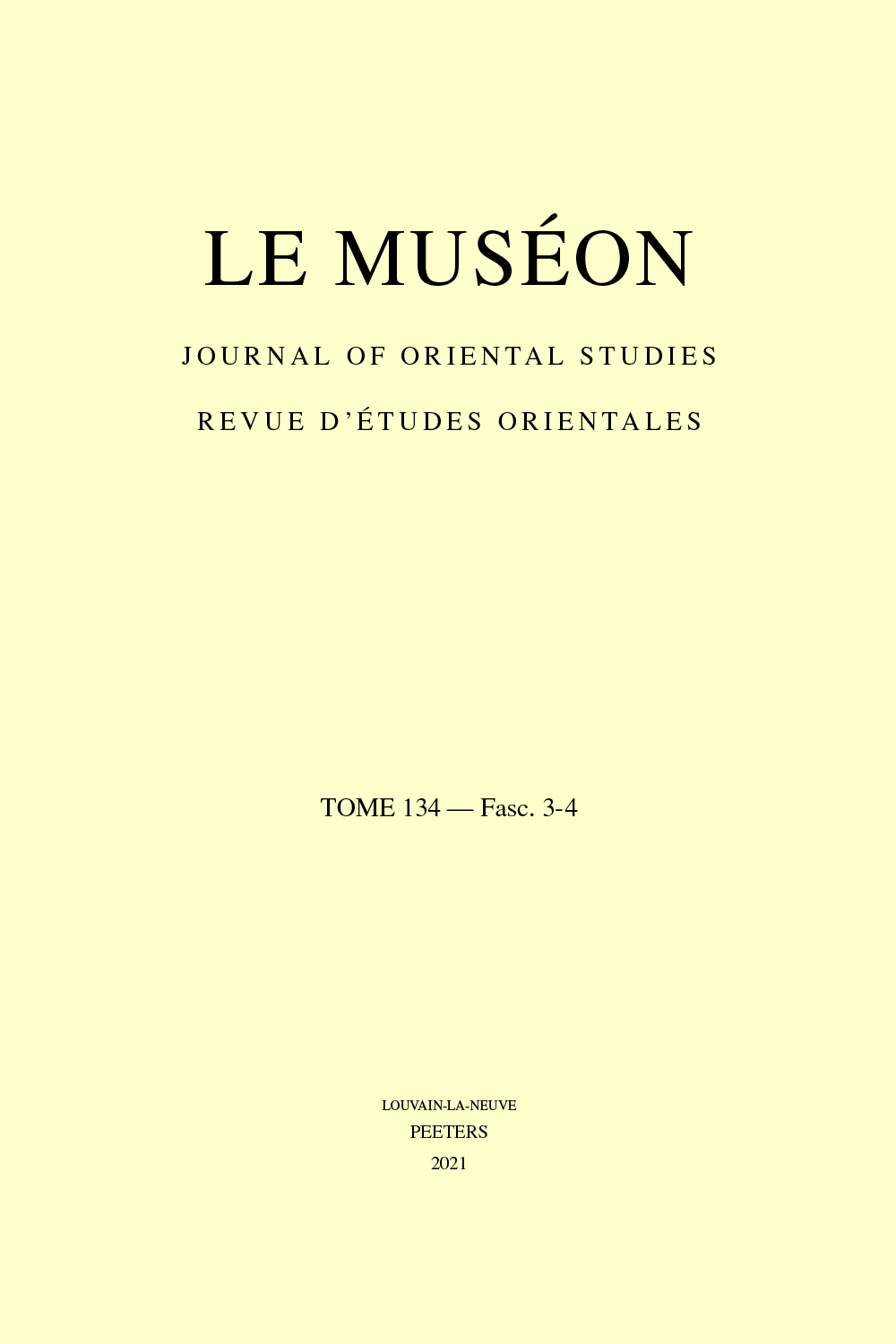 previous article in this issue previous article in this issue | next article in this issue  |

Preview first page |
Document Details : Title: Manuscript Iviron georg. 8 as Evidence of Cross-Cultural Relationships Author(s): GAPRINDASHVILI, Kh. Journal: Le Muséon Volume: 137 Issue: 3-4 Date: 2024 Pages: 481-493 DOI: 10.2143/MUS.137.3.3293897 Abstract : The Tao-Klarjeti literary centre played an important role in the development of Georgian culture. One of the best examples of Georgian treasures copied in Tao is the collection of hagiographical works kept in the manuscript Ivir. georg. 8 at the Iviron Monastery on Mount Athos. This manuscript, consisting of 380 pages, is written in two columns with calligraphic nusxuri. The Iviron collection contains 64 hagiographic texts, with both translated (from Greek, Armenian, etc.) and original works preserved in this manuscript. The manuscript is dated by palaeographic features to the 2nd half of the 10th century, although the translated works preserved in this collection possess the characteristics of early-period translations. The readings in the Iviron collection are given according to the ecclesiastical calendar year, starting on December 27 (Passion of St. Stephen) and extending until June 27 (Martyrdom of Trachus, Probus, and Andronicus). It is possible to assume that the collection was conceived to be in two books and the second volume of the Iviron hagiographic collection (Ivir. georg. 8) contained the material of the remaining six months, from July to December. The Iviron manuscript was created in the multicultural environment of Tao-Klarjeti, where Chalcedonian Armenians lived and worked alongside Georgians, and the official liturgical language was Georgian. |
|


